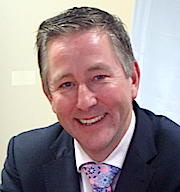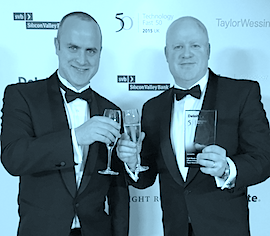A series of causeways built on the wartime orders of Churchill in the 1940s are playing a vital part in the roll-out of high speed fibre broadband for a number of Orkney Islands' communities. The new fibre optic cable has been installed along the Churchill Barriers, rather than laid underwater.
More than 4,700 households and businesses are now able to access the new fibre broadband network thanks to the Digital Scotland Superfast Broadband programme.
The village of Burray is the first place off the mainland to benefit. The high-speed technology is available now to the north part of the village and, in the coming weeks, coverage will be extended to the village centre.
The roll-out is expected to reach an additional 500 Orkney homes and businesses by Christmas in communities such as St Mary's and St Margaret's Hope. Areas already offering services include Kirkwall, Stromness, Finstown and Harray.
Highlands and Islands Enterprise (HIE) is leading the £146m project in the region. It's funded by the Scottish Government, the UK Government, HIE and private sector partner BT, with engineers from BT's local network business, Openreach, delivering the project on the ground.
Stuart Robertson, HIE's Director of Digital, said: "Building a fibre optic network across the Highlands and Islands presents its own unique stories.
"In Orkney, history is playing its part. The Churchill Barriers, built to protect the fleet at Scapa Flow, have allowed us to run the main network cable from Kirkwall to Holm, to Burray and on to St Margaret's Hope. For Westray, we laid around 28km of subsea cabling across the Bay of Tuquoy.
"By the end of next year we will have taken access to fibre optic based broadband in Orkney from zero to at least 76 per cent of premises. Nowhere is forgotten and in addition to this first phase we, and our colleagues in Community Broadband Scotland, are already looking at ways to reach further."
Robert Thorburn, BT programme manager, said: "It's brilliant to be using a unique engineering feat from the 40s to deliver the latest 21st century technology to some of Scotland's most remote communities.
"Churchill ordered the barriers to be built to keep the Germans out after a U-boat sneaked into Scapa Flow and sank the Royal Oak. Now we're using them to let the whole, wide world in at high-speed.
"In terms of the overall programme, more than half of the current, planned work in Orkney is complete. With the main fibre spine almost all in place, work continues to build the local green cabinets which bring services to homes and businesses."

 Societe Generale Equipment Finance (SGEF) has stepped up its technology finance activities in the UK having formed an Office Equipment division spearheaded by Simon Rodway (pictured), Head of Office Equipment Channel.
Societe Generale Equipment Finance (SGEF) has stepped up its technology finance activities in the UK having formed an Office Equipment division spearheaded by Simon Rodway (pictured), Head of Office Equipment Channel. A growth rate of 315% over the past four years has secured New Star Networks (NSN) 49th position in the 2015 Deloitte UK Technology Fast 50, a listing of the 50 fastest growing technology companies in the UK.
A growth rate of 315% over the past four years has secured New Star Networks (NSN) 49th position in the 2015 Deloitte UK Technology Fast 50, a listing of the 50 fastest growing technology companies in the UK.